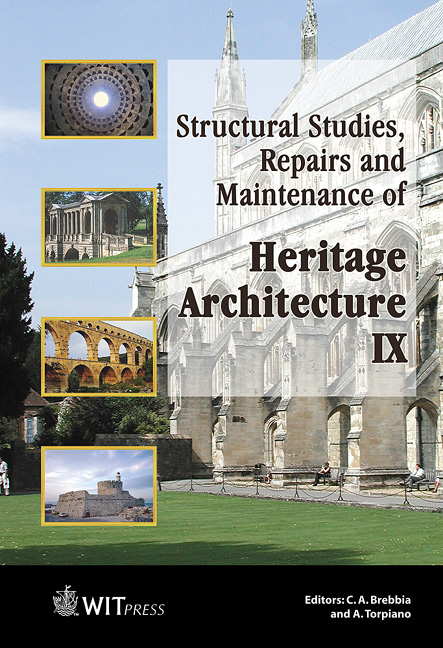Damage To Masonry Buildings Due To The Aegion (GR) 1995 Earthquake
Price
Free (open access)
Transaction
Volume
83
Pages
11
Published
2005
Size
796 kb
Paper DOI
10.2495/STR050191
Copyright
WIT Press
Author(s)
F. V. Karantoni & M. N. Fardis
Abstract
The damage observed in masonry buildings due to the Aegion, Greece, 1995 earthquake is examined in connection to several structural characteristics, such as the masonry material, the number of storeys, location within the building block and period of construction, since different structural systems and construction methods were used at different times. The building sample includes all the structural masonry buildings in the town. Damage is graded on the basis of in-situ observations according to a five level damage scale. The main conclusion is that the masonry material, the number of storeys and the presence of rigid diaphragms are of significant importance. Keywords: masonry buildings, damage, vulnerability, earthquakes. 1 Introduction The vast majority of the building stock worldwide consists of structural masonry buildings. A significant percentage of them are architectural heritage buildings, protected by national and international laws. In seismic prone areas knowledge of the seismic vulnerability features of masonry buildings is a significant factor for their preservation through structural interventions. In this paper the degree and type of damage suffered by masonry buildings during the Aegion (1995) earthquake is correlated with their structural characteristics. Karantoni and Fardis [5] have correlated the damage of reinforced concrete buildings in the same earthquake to their structural characteristics and period of construction. Aegion is a typical Greek town of 20,000 inhabitants. Its building stock consists on one hand of one- to two-storey masonry buildings dating from the second half of the 19th century to recently, and on the other hand of concrete
Keywords
masonry buildings, damage, vulnerability, earthquakes.




